Email Marketing Statistics Highlights
– Email Usage: Nearly 4.5 billion people use email worldwide in 2025, and this number is projected to reach over 4.8 billion by 2027.
– Email Engagement: 88% of users check their email multiple times a day, with 39% checking it 3-5 times daily.
– Mobile Optimization: 50% of people will delete an email if it isn’t optimized for mobile.
– Automation Impact: Automated emails generate 320% more revenue than non-automated emails.
– ROI: For every $1 spent on email marketing, the average return is $36, delivering a 3600% ROI.
– B2C Influence: 59% of consumers say marketing emails influence their purchase decisions.
Are you up to date with the latest email marketing statistics? You likely know that email marketing ROI (return on investment) is huge compared to other channels. However, when your resources are limited, you want to make sure you’re investing your time and money in the right marketing strategies.
Email marketing is one of those ‘right strategies’ that businesses of all kinds should invest in. But, just in case you’re not convinced you’ll see an ROI on email marketing, we’ve compiled a big list of email marketing stats that will blow your mind.
In this article, we’ll share the latest email marketing statistics that will help you take your email marketing campaigns to the next level.
Let’s go!
✅ Credibility of the source
✅ Relevance to marketers
✅ Recency and practical value
We also cross-checked multiple sources to ensure accuracy. This page is updated regularly to keep the data fresh.
Since there are a ton of statistics about email marketing in this post, here’s a table of contents to guide you through each part:
Email Usage Statistics
First, let’s take a look at some basic email marketing statistics on email usage.
One of the biggest benefits of using email to communicate with your customers is that nearly everyone uses email. In fact, 92% of online adults use email, with 61% using it on an average day.
And more and more people are using it year-after-year. The number of email users worldwide is approximately 4.6 billion in 2025. That number is projected to grow to over 4.8 billion by 2027.
Plus, nearly 376 billion emails are sent each day, and this number is expected to reach 408 billion in 2027.
People aren’t just using email to connect with family and friends either. 60% of consumers prefer to be contacted by brands through email, which is good news for your business.
Even better news? 88% of email users check their inbox multiple times a day, according to a 2023 survey of email users. Here are some of their findings:
- 39% check their email 3-5 times a day
- 27% check their email 10-20 times a day
- 22% check their email 20+ times a day
- 8.5% check their email once a day
- 3.5% don’t check their email every day

This frequency isn’t likely to change anytime soon. 81% of Gen Z members check their email at least once a day.
Mobile Email Marketing Statistics
Devices like smartphones and tablets make it super easy for users to check their inboxes on the go. In fact, you can expect 26-78% of your emails to be opened on mobile devices. Your exact number will depend on your industry and target audience.
The trend toward mobile email use will likely continue as time goes on. 67% of Gen Z say they primarily use email on their smartphone. That’s compared to 59% of millennials, 53% of Gen X, and 36% of Baby Boomers.
Among people who use mobile devices for email, a whopping 81% prefer to open emails on their smartphones, while 21% prefer their tablets. Smartphones crush the competition when it comes to mobile devices.
But, just because users are checking their email on their smartphones, that doesn’t mean they’re not checking their emails on desktop, too. In fact, 23% of consumers who open an email on a mobile device will open that email again later, many times on desktop:
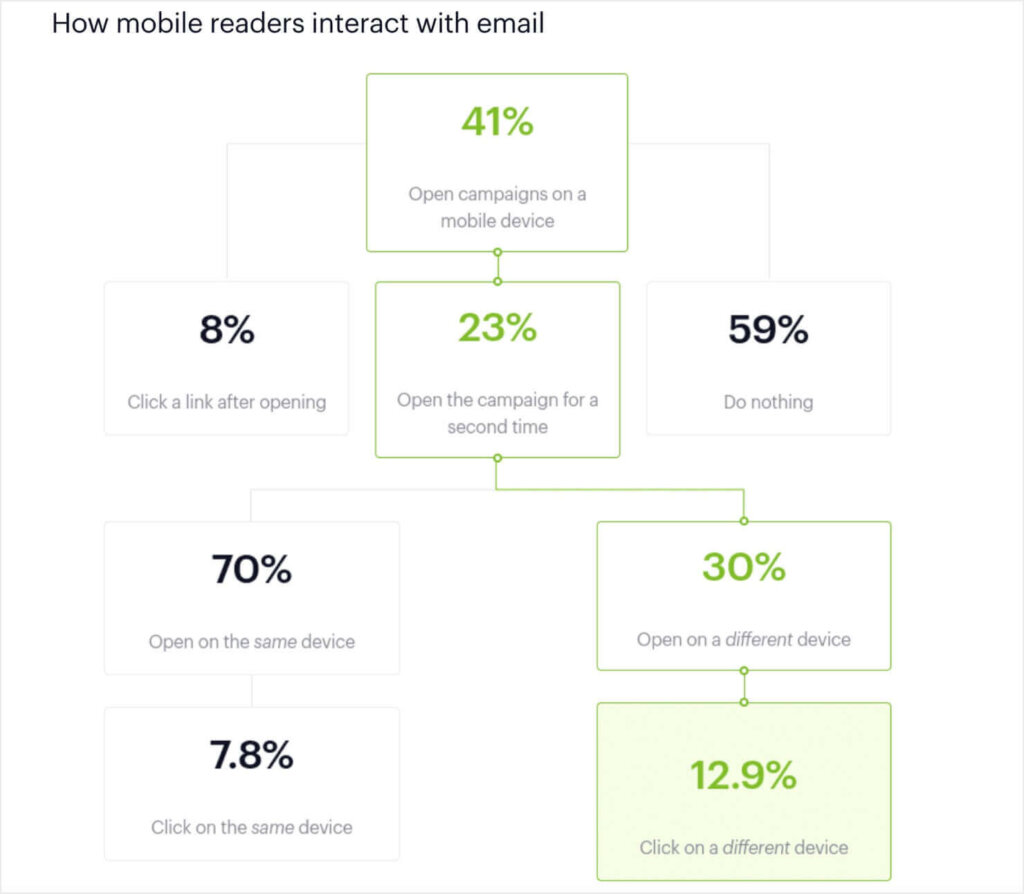
Campaign Monitor also found that, if an email is read on mobile and then read for a second time on desktop, that consumer has a 65% higher likelihood of clicking through.
As you can see, it’s important to make sure your emails are optimized for mobile since that’s how a ton of people check their email inboxes.
50% of people will delete an email if it’s not optimized for mobile. So, if your email marketing campaigns aren’t mobile-friendly, all your hard work will go to waste.
Luckily, most email marketing services like Constant Contact and Brevo (formerly Sendinblue) offer responsive email templates that will make your email messages look great on any screen.
In addition, with an email marketing service, you can automate your email marketing.
Email automation is a must-have for businesses because it not only saves you time, but it makes you more money. 320% more revenue is driven from automated emails than non-automated emails!
Now let’s look at the differences between B2B email marketing and B2C email marketing.
B2B Email Marketing Statistics
Email marketing is one of the most powerful tools for B2B businesses to generate more leads and sales.
According to a 2023 B2B marketing survey, 50% of B2B marketers say email marketing is the most impactful channel in their multi-channel marketing strategy.
With email marketing, B2B businesses can send content to subscribers to educate them about their product/service and convert leads into customers.
71% of B2B marketers use an email newsletter as part of their content marketing strategy, according to a 2025 report from the Content Marketing Institute (CMI). Additionally, CMI’s 2024 report found that 71% of B2B marketers cited email engagement as one of the most important metrics for the performance of their content.
B2B marketing emails do see a slightly lower open rate (15.14%) compared to B2C emails (19.7%). However, B2B has a 3.18% click rate, compared to 2.09% for B2C.
You can see why 42% of B2B marketers cite email as their most effective marketing channel, only outranked by in-person events and webinars.
B2C Email Marketing Statistics
Email marketing also works wonders for B2C businesses. It can turn window shoppers into buyers, boost engagement, improve customer loyalty and retention, and more.
And the statistics prove it!
59% of consumers say marketing emails influence their purchase decisions, with over 50% saying they purchase from an email at least once a month.
80% of small and midsized businesses say that email marketing is their most important online tool for customer retention. That’s because you can use email campaigns to send your existing customers:
- Notifications about special sales and offers
- Exclusive discounts and coupon codes
- New product announcements
- Product recommendations
An abandoned cart email strategy is also necessary for eCommerce stores that want to win back sales.
Check out this abandoned cart email from Bambu Lab US:
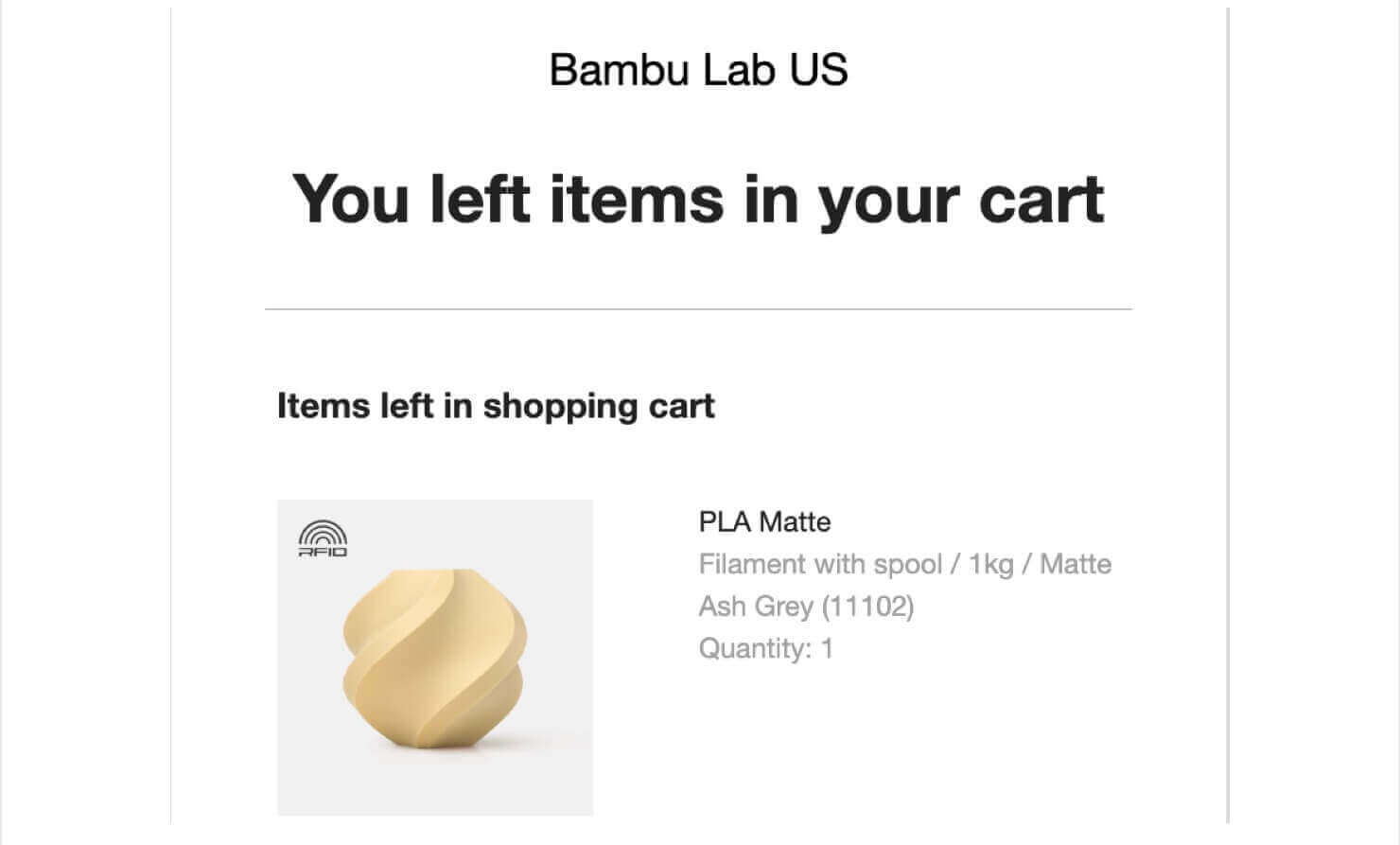
Abandoned cart emails like these really work.
Abandoned cart email campaigns have an open rate of 50.50%, according to a 2024 email marketing report from Klaviyo. Businesses also earn an average of $3.45 in revenue per abandoned cart email recipient.
Email Marketing Statistics & Benchmarks by Industry
Next, let’s look at some common email marketing benchmarks and how they differ across industries. For these statistics, we’ll look at data from the popular email service provider Constant Contact.
Constant Contact updates its list of email marketing statistics by industry several times a year. Here are some of the numbers from October 2024:
Technology Services
- Open Rate: 26.80%
- Click Rate: 2.65%
- Bounce Rate: 12.50%
Retail
- Open Rate: 33.80%
- Click Rate: 1.11%
- Bounce Rate: 8.81%
Dining & Food Services
- Open Rate: 32.54%
- Click Rate: 0.81%
- Bounce Rate: 8.78%
Real Estate
- Open Rate: 33.75%
- Click Rate: 1.31%
- Bounce Rate: 13.84%
Education
- Open Rate: 39.50%
- Click Rate: 2.33%
- Bounce Rate: 9.32%
Bonus Resource:
Personalized Email Marketing Statistics
Consumers love getting messages and offers that are personalized to their needs and interests.
71% of consumers expect personalized interactions from brands, and 76% get frustrated when their brand interactions aren’t personalized to their interests.
That makes personalization incredibly important to a great email marketing strategy.
Personalization also drives sales. 80% of consumers say they’re more likely to do business with a company that uses personalization.
In order to create more relevant messages, 77% of marketers say they use email to send personalized content to their subscribers.
You can personalize your emails in a number of ways. For instance, many marketers personalize emails based on demographics like gender and age. In fact, 66% of marketers use age data to personalize their emails.
You can also create personalized email marketing campaigns based on previous purchase activity or specific actions the user has taken.
For example, Netflix sends emails to its customers based on TV shows and movies they’ve watched and loved.
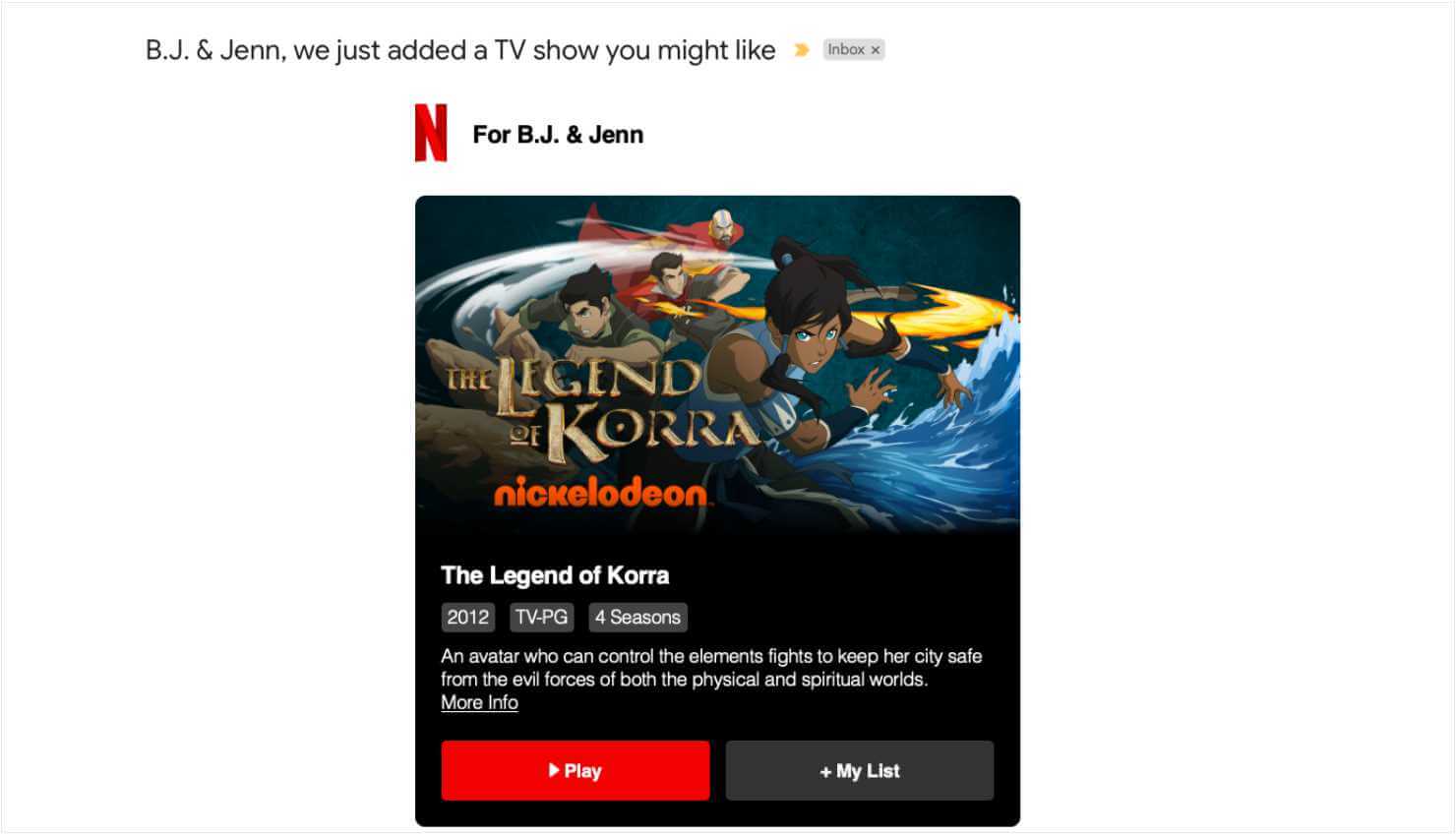
This type of personalization is achieved through email segmentation.
According to an email marketing survey from HubSpot, 65% of marketers say their segmented emails have better open rates.
The benefits continue even after subscribers have opened their emails. When Virgin used subscriber data to personalize the images within their email, they increased their click-through rate by 29%.
The takeaway? When your emails are personalized to each user, they’ll be more likely to take action and engage with your emails.
Email Engagement Statistics
Aside from personalization, let’s find out what other factors make users want to engage with your emails.
What convinces users to open your emails in the first place?
Subscribers look at 3 things when deciding whether to open an email:
- 42% look at the sender name first
- 34% look at the subject line first
- 24% look at the preview text first
You’ll need to optimize all 3 if you want to improve your email open rates.
Once you get your subscribers to open your emails, you want them to click your calls to action (CTAs) and stay subscribed.
73% of marketers stick to just 1 or 2 CTAs per email, according to email research by Databox. Limiting your CTAs can encourage subscribers to take the desired action.
In the same report, email marketers cited these as the top reasons for unsubscribes:
- Email relevance (40%)
- Content too salesy or spammy (28%)
- Email frequency (27%)
However, actual consumers cite slightly different reasons for unsubscribing, according to a survey from Constant Contact:
- 69% said they received too many emails from that sender
- 56% said the content was no longer relevant
- 51% said the content wasn’t what they expected
Related Resource
The Benefits of Email Marketing
Wondering if email marketing is really worth it?
For the finale of this big list of email marketing stats, let’s go over some email marketing conversion statistics and email ROI statistics to show you the true benefits of email marketing.
Globally, 30% of marketers cite email marketing as having the highest ROI of all digital marketing channels. Another 43% said it has medium ROI.
This is probably because, for every $1 spent on email marketing, $36 is made in return, according to email marketing data from Litmus. That equals a 3600% ROI.
Here are some more email marketing success statistics you can swoon over:
- 52% of consumers made a purchase directly from an email in the last year, according to Marigold’s 2024 Consumer Trends Index.
- 18% of companies achieve email marketing ROI greater than $70 per $1 invested.
- Email outperformed banner ads and SMS marketing by 108% in 2023
- Email outperforms social media posts by 13% and social media ads by 11%
And that’s a wrap!
We hope these email marketing statistics will help you supercharge your emails!
Also check out:
- Email Marketing: The #1 Ridiculously Easy Way to Grow Your Business
- 10 Brilliant Email Marketing Examples and Why We Love Them
- Best Time To Send Email: Insights From Top Studies
And remember, if you need help growing your email list, OptinMonster is the best tool for turning website visitors into email subscribers. Get started with OptinMonster today to explode your email list.

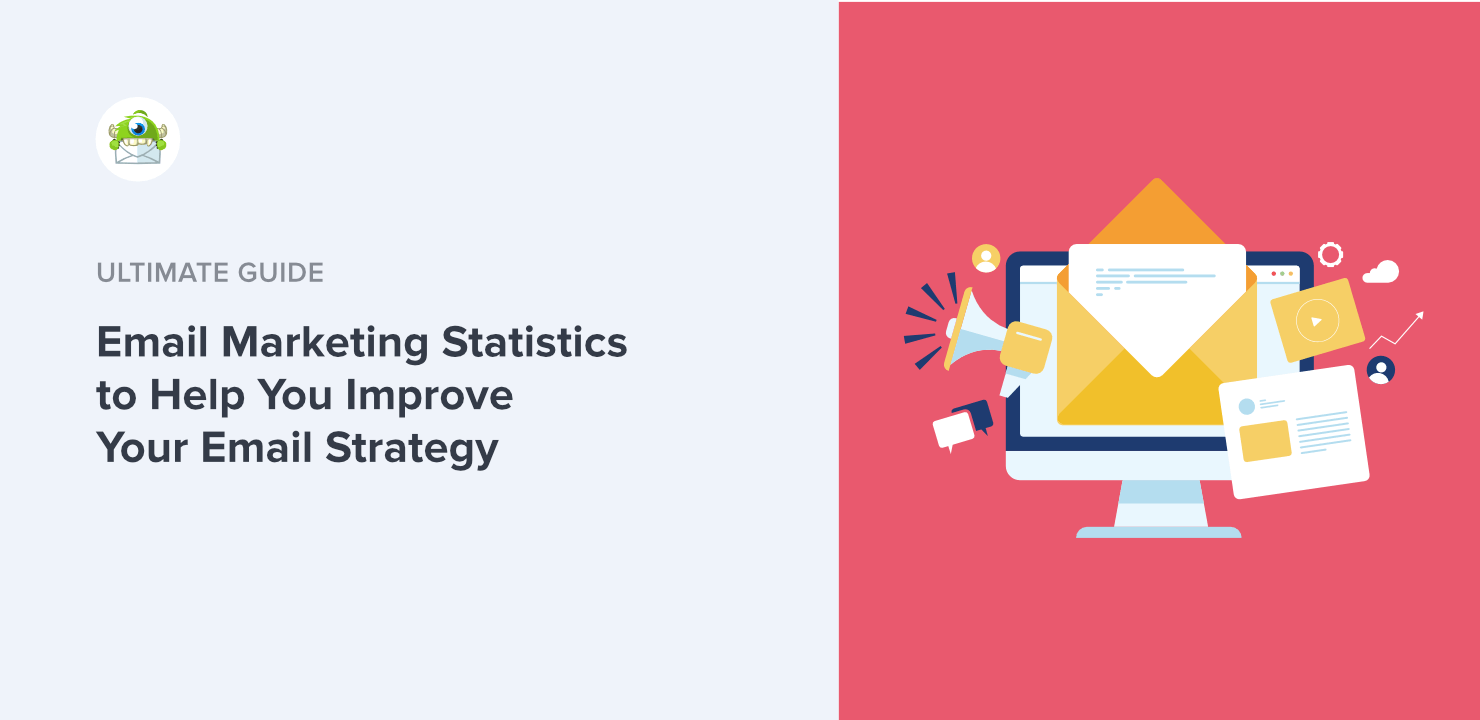
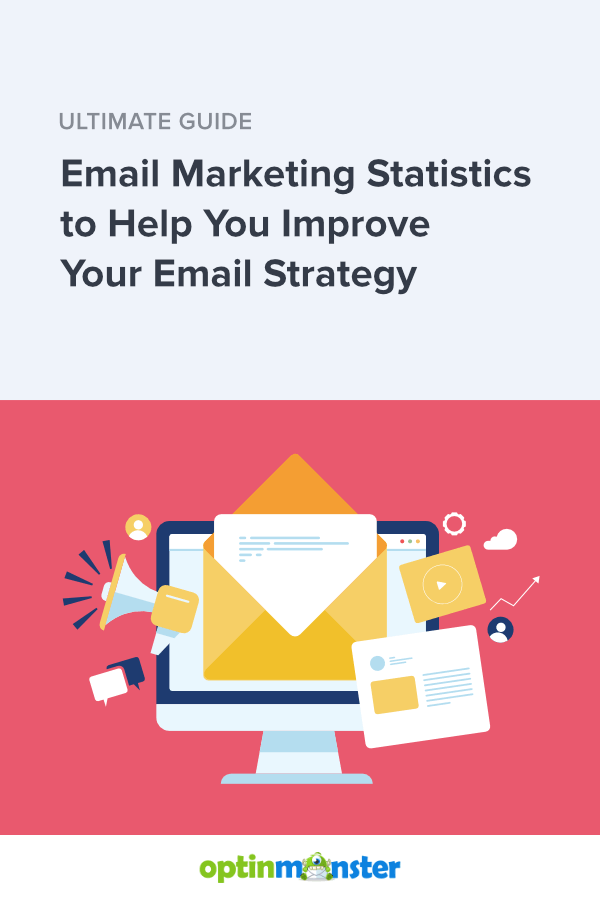








Add a Comment